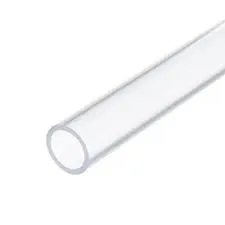ඔක්. . 30, 2024 14:55 Back to list
thermoplastic welding rod
Understanding Thermoplastic Welding Rods Applications and Benefits
Thermoplastic welding rods play a crucial role in a variety of industries, including manufacturing, construction, and automotive applications. These rods are made from thermoplastic materials, which are known for their ability to be molded and re-molded upon heating, making them ideal for various welding processes.
The primary function of thermoplastic welding rods is to serve as filler material during the welding process. When heated, these rods melt and fuse with the base materials, creating strong, durable joints. One of the most popular thermoplastics used for welding rods includes polyethylene (PE), polypropylene (PP), and polyvinyl chloride (PVC). Each type possesses its unique properties, making them suitable for specific applications.
One significant advantage of thermoplastic welding rods is their versatility. They can be used in conjunction with different welding techniques, such as extrusion welding, hot air welding, and vibration welding. This flexibility allows manufacturers to choose the best method for their specific project requirements. For instance, extrusion welding is often utilized in joining large sections of plastic, while hot air welding is better suited for smaller components or intricate designs.
thermoplastic welding rod

Moreover, thermoplastic welding rods offer excellent mechanical properties once the joint is formed. The resulting weld can exhibit high strength, flexibility, and resistance to environmental factors such as moisture and chemicals. This durability is particularly important in applications where components are exposed to harsh conditions, making thermoplastic welding rods a reliable choice.
Another notable benefit of using thermoplastic welding rods is the ease of repair. In many applications, components can become damaged over time. Unlike other materials that may require complete replacement, welded thermoplastic sections can often be repaired using additional welding rods, thus saving time and reducing costs.
In terms of environmental impact, thermoplastic materials are increasingly being designed with sustainability in mind. Manufacturers are exploring the use of recycled materials for the production of welding rods, contributing to a circular economy and reducing waste. This shift not only supports environmental responsibility but can also lead to cost savings in material procurement.
In conclusion, thermoplastic welding rods are indispensable in various sectors due to their versatility, durability, and the ease of repair they provide. As industries continue to evolve, the development of more sustainable thermoplastic options will further enhance their appeal. Understanding the properties and applications of these welding rods can lead to more efficient processes, ultimately benefiting manufacturers and consumers alike.
-
Durable PP Rigid Sheet: Lightweight, Chemical Resistant Solutions
NewsAug.21,2025
-
PVC Grey Sheet for Extraction: Chemical Resistant & Durable
NewsAug.19,2025
-
Durable PVC Pipe Fittings for Plumbing & Irrigation Needs
NewsAug.18,2025
-
HDPE Steel Belt Reinforced Spiral Corrugated Pipe | High Strength
NewsAug.17,2025
-
HDPE Pipe Fittings: Durable, Leak-Proof Solutions
NewsAug.16,2025
-
Premium CPVC Sheet: High-Temp & Chemical Resistant Solutions
NewsAug.15,2025

